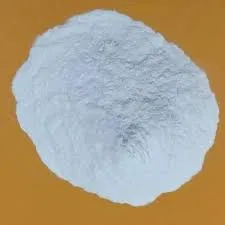
Dec . 05, 2024 11:48 Back to list
hpmc types
Understanding HPMC Types A Comprehensive Overview
Hydroxypropyl methylcellulose (HPMC) is a cellulose ether that has gained widespread popularity in various industries due to its remarkable properties and versatility. This article delves into the different types of HPMC, their chemical structure, applications, and important selection criteria, which are crucial for manufacturers and formulators in optimizing their products.
What is HPMC?
HPMC is derived from cellulose, a natural polymer found in plant cell walls. By chemically modifying cellulose, HPMC is created with properties that allow it to dissolve in water, forming a clear, viscous solution. The primary modification involves the introduction of hydroxypropyl and methyl groups, which enhance solubility and stability. The ratio of hydroxypropyl to methyl groups determines the type and properties of HPMC produced.
Types of HPMC
HPMC can be categorized based on different viscosity grades, substitution levels, and molecular weight. Here are the main types
1. Low Viscosity HPMC This type has a lower molecular weight and is typically used in applications where quick dissolution and low viscosity are required, such as in instant food products and certain pharmaceutical formulations.
2. Medium Viscosity HPMC This is the most commonly used type of HPMC. It offers a good balance between viscosity and solubility, making it suitable for various applications, including construction materials, several cosmetic products, and food additives.
3. High Viscosity HPMC These HPMC types are characterized by higher molecular weights and viscosity. They are particularly useful in applications that require thickening, such as in paints, adhesives, and sealants. The gel-forming properties of high viscosity HPMC also make it suitable for specific pharmaceutical formulations.
4. Pharmaceutical Grade HPMC This category is specifically designed for use in the pharmaceutical industry. It meets strict standards for purity and is often used as a binder, film-forming agent, or controlled-release matrix in drug formulations.
Applications of HPMC
HPMC has a diverse range of applications across various industries
hpmc types

- Pharmaceuticals In the pharmaceutical industry, HPMC is used as a binder in tablet formulations, a thickener in suspensions, and a coating agent to enhance the stability and release profile of active ingredients. Its ability to form gels makes it ideal for controlled-release systems.
- Food Industry HPMC is widely used as a food additive due to its emulsifying, thickening, and stabilizing properties. It is commonly found in products like sauces, dressings, and gluten-free bakery products to improve texture and shelf life.
- Construction In the construction industry, HPMC acts as a water-retaining agent in cement-based products, improving workability and adhesion while minimizing cracking.
- Personal Care Products In cosmetics and personal care formulations, HPMC serves as a thickener, film-former, and stabilizer, enhancing the texture and performance of creams, lotions, and gels.
Selecting the Right HPMC Type
When selecting an HPMC type, manufacturers must consider several factors
1. Viscosity Requirements The desired viscosity of the final product will significantly influence the choice of HPMC. It’s essential to select a type that meets the specific rheological properties required for the application.
2. Solubility The solubility characteristics of HPMC vary among different grades. Understanding the solubility profile is crucial for ensuring proper functioning in formulations.
3. Compatibility with Other Ingredients HPMC should be compatible with other components in the formulation to prevent adverse interactions that could affect product performance.
4. Regulatory Compliance Especially in pharmaceutical and food applications, choosing HPMC that meets regulatory standards for safety and purity is critical.
Conclusion
HPMC is a versatile, functional ingredient with a wide array of applications across multiple industries. Understanding the different types of HPMC and their unique properties is essential for manufacturers looking to optimize their formulations. As industries continue to evolve and demand innovative solutions, HPMC remains a valuable component in developing quality products.
-
Versatile Hpmc Uses in Different Industries
NewsJun.19,2025
-
Redispersible Powder's Role in Enhancing Durability of Construction Products
NewsJun.19,2025
-
Hydroxyethyl Cellulose Applications Driving Green Industrial Processes
NewsJun.19,2025
-
Exploring Different Redispersible Polymer Powder
NewsJun.19,2025
-
Choosing the Right Mortar Bonding Agent
NewsJun.19,2025
-
Applications and Significance of China Hpmc in Modern Industries
NewsJun.19,2025







